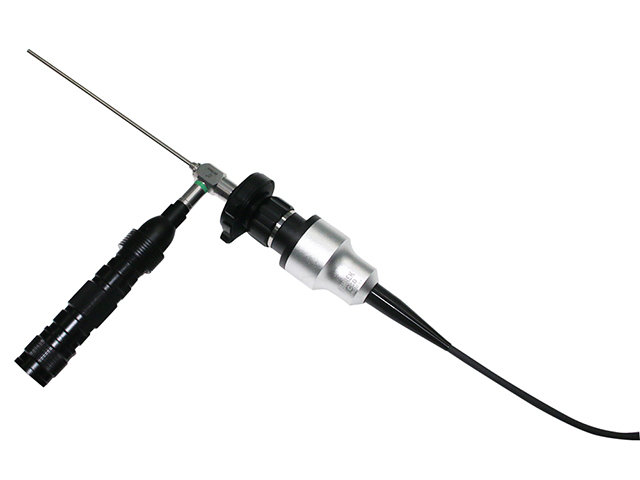Precautions for the use of hard tube endoscopes
Hard tube endoscope are relatively delicate medical devices, which can easily cause damage. The following is an introduction on how to use, maintain and maintain the rigid tube endoscope to help medical staff use this device better and prolong the service life of the rigid tube endoscope.
The structure of the rigid tube endoscope
At present, although the products of various rigid tube endoscope manufacturers in the world have different optical paths and different appearances, their basic structures are the same: they are composed of a working lens tube part, a structure part, an eye mask part, and an optical cable interface part. The main part of the structure, the eye mask, and the optical cable interface are generally not easily damaged except for severe bumps. The easily damaged part is the working mirror tube part. Take the φ4mm hard tube endoscope as an example: the working lens tube is mainly composed of four parts: the outer tube, the endoscope, the optical lens, and the optical fiber.

Precautions in the use of hard tube endoscope
Rigid-tube endoscopes are not often damaged during the operation. Although they will come into contact with human tissues such as muscles, mucous membranes, bones, etc., these bumps are minor and will not cause damage to the scope. It is only for observation, not a force point for other devices. However, when using other instruments, especially forceps and scissors with large bite force, be careful not to extend the front end of the mirror tube into the occlusal area of the device, so as not to accidentally damage the tube. When using this type of equipment, sometimes the doctor stretched the speculum very close to the tissue in order to see clearly the tissue in the occlusal zone. The speculum did not retract when the equipment was occluded, and the speculum was accidentally injured. Such accidents can be avoided by paying attention to keeping all the occlusal openings of the instrument within the observation range of the speculum during the operation.
Some surgical endoscopes are used in the sheath. When changing other angle endoscopes or inserting and pulling out instruments, care should be taken to move lightly and not use excessive force. Especially in the process of plugging and unplugging the speculum, when encountering resistance, you should carefully look for the cause, and pull it out together with the sheath when necessary, and do not use brute force.
When the speculum is operated with photoelectric technology such as laser vaporization, high-frequency resection, microwave, etc., pay attention to the distance between the front end of the speculum and the treatment point, and the front end of the speculum shall not be shocked or burnt. When using these instruments for the first time, the surgeon should practice repeatedly to grasp the relationship between the object distance and the actual object distance in the endoscope image, and confirm the distance between the front end of the endoscope and the treatment point, so that it can be used freely in actual surgery.
When the speculum is operated with photoelectric technology such as laser vaporization, high-frequency resection, microwave, etc., pay attention to the distance between the front end of the speculum and the treatment point, and the front end of the speculum shall not be shocked or burnt. When using these instruments for the first time, the surgeon should practice repeatedly to grasp the relationship between the object distance and the actual object distance in the endoscope image, and confirm the distance between the front end of the endoscope and the treatment point, so that it can be used freely in actual surgery.
At present, planers have been widely used in clinical operations of otolaryngology and orthopedics to remove diseased tissues. The blade is sharp, high in hardness, fast in rotation, and large in torque. If the endoscope is cut to the endoscope, the endoscope will undoubtedly be damaged. In this type of operation, attention should be paid to adjusting the speed of flushing and suction, so that the endoscope image is clear and not blocked by blood stains at any time, and the rotating part of the control knife head is always within the observation range of the endoscope. When the operation range is large, the knife should be stopped first. Rotate the head, then move the speculum, and then move the cutter head under the surveillance of the speculum, and start planing after reaching the appropriate position. When you feel that the planer is working abnormally or the illuminance is suddenly reduced, it is possible that the speculum has been damaged and should be replaced in time to avoid greater losses.
In general important operations, there should be a set of spare speculum and key instruments, which can be easily replaced when problems are found; if the speculum with an inappropriate angle or unmatched equipment is used to force the operation, it will easily cause damage to the speculum.
Shanghai Shiyin is a manufacturer specializing in the production of endoscopes and medical surgical instruments. The products are of reliable quality and are exported to overseas countries and regions. Welcome to leave us a message and we will reply to you as soon as possible
